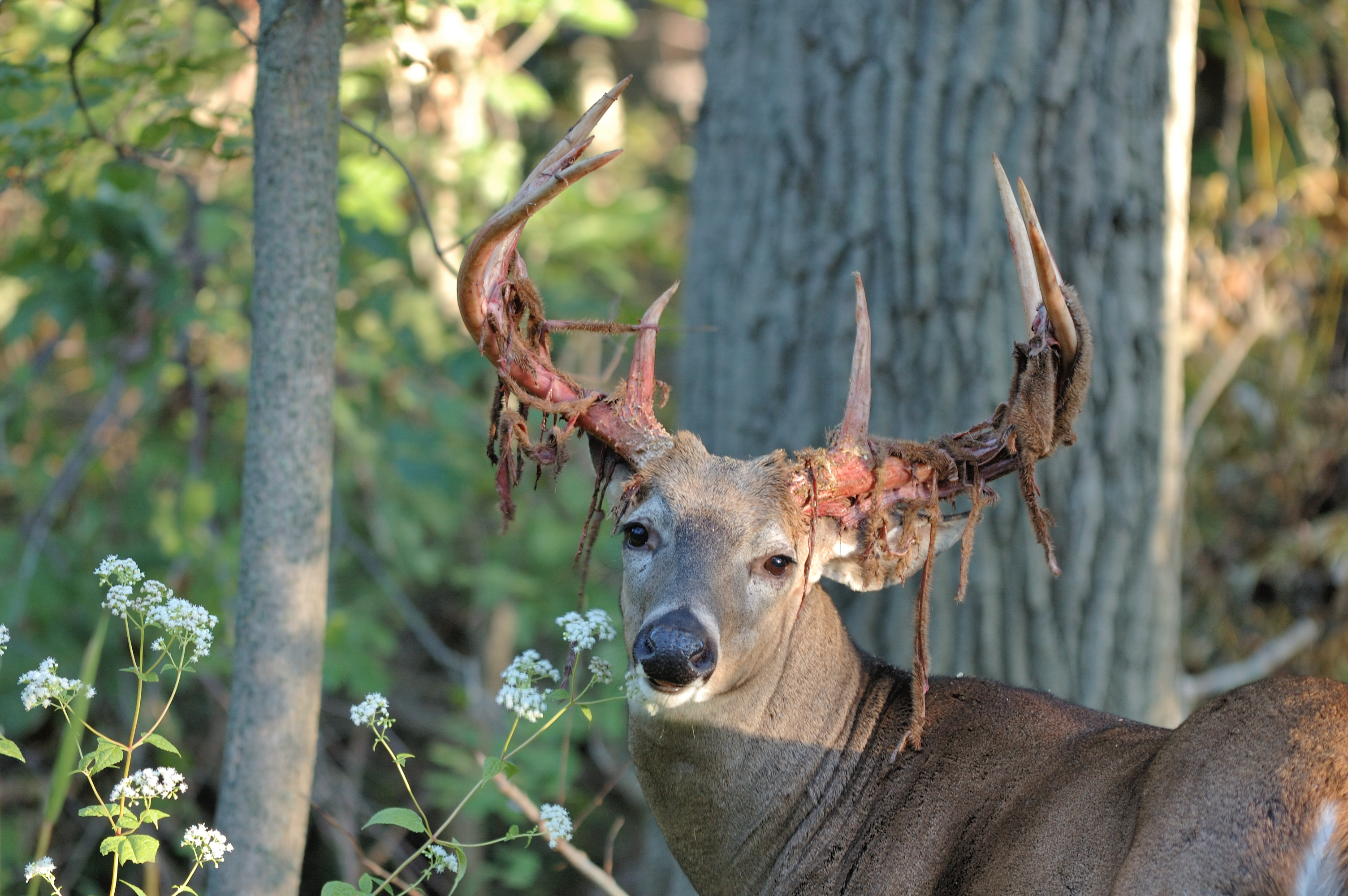Every year, animals in the deer family go through a cycle of growing and shedding their antlers, those badass branched bones that come in handy for finding mates and finding. They don’t always look so bony though; for at least some of the year, antlers are covered in a fuzzy layer called velvet.
This so-called “velvet phase” occurs when the antlers are still growing, a time during which they need plenty of nutrients and minerals. To get enough of those, you need a decent blood supply – and that’s exactly what velvet provides.
Within the skin that’s covered in the short, dense fur that lends velvet its name, there’s also a wealth of blood vessels, allowing for a rapid phase of growth.
However, antlers are also particularly vulnerable during this time – if velvet antlers are injured, it can result in problems with growth and deformities.
Luckily, antlers aren’t coated in velvet forever. Once the rapid growth phase ends, they start to calcify, transforming them from softer cartilage to hard bone. When this stage is complete and the antlers are fully grown, the blood supply is cut off.
Without a blood supply, the velvet dies and dries out. It’s at this point that you might see antlered deer rubbing their headgear against trees with reckless abandon; they do this because the velvet is no longer needed and can even be a bit itchy.
Although velvet might slough off by itself, rubbing at it with some bark can speed along the process, and in most cases, all of the velvet is shed in the space of just 24 hours.
If you happen to catch a glimpse of a deer during this shedding phase, you’d be forgiven for thinking you’d accidentally walked onto the set of some sort of horror movie. Velvet can hang off antlers before it fully comes off and since it’s skin, this can look downright gruesome.

Proof that you can still serve looks even if you have dead skin hanging off your head.
Image credit: Bruce MacQueen/Shutterstock.com
It might appear bloody, but it doesn’t cause the deer any harm. In fact, some of them even take it as an opportunity for a healthy snack.
“While it can seem jarring and painful, this is a healthy and painless process for shedding their velvet,” Great Smoky Mountains National Park explained in a Facebook post. “The velvet is nutritionally dense and will sometimes be ingested by the deer.”
Once the velvet is off and only bone remains, the deer are ready for the mating season – also known as the rut – after which the antlers begin to demineralize and weaken. Eventually, they fall off and the whole cycle, velvet phase and all, begins again.
Source Link: Why Are Antlers Fuzzy?